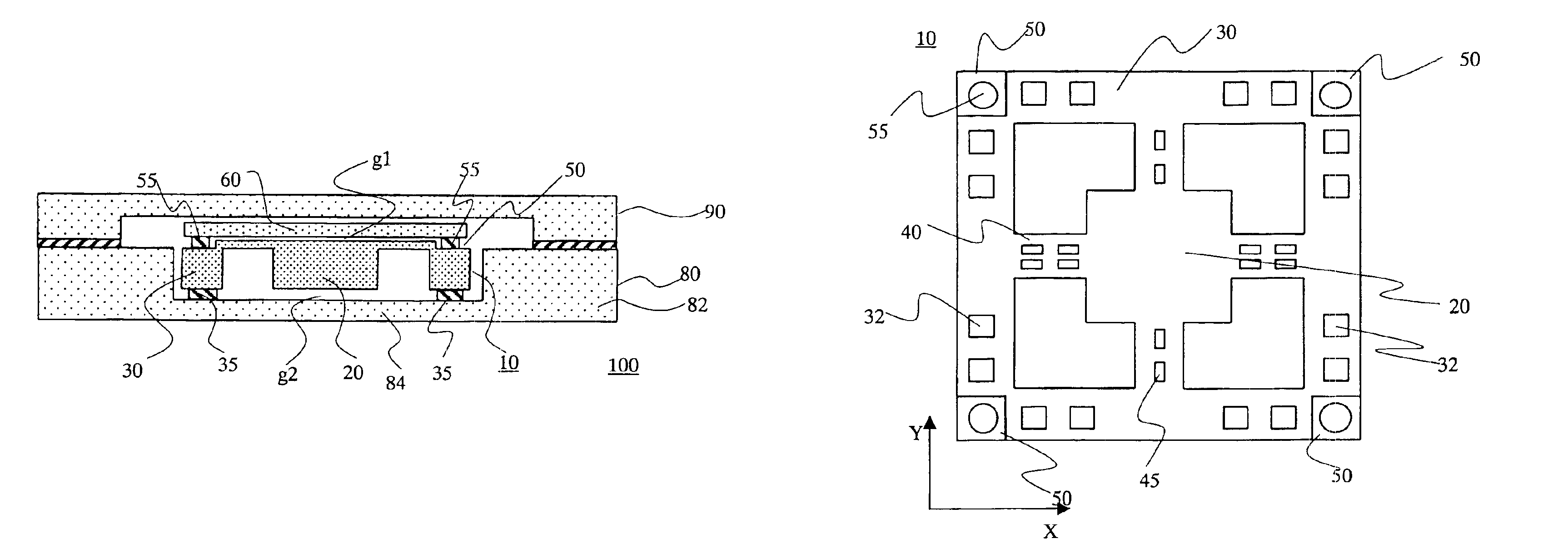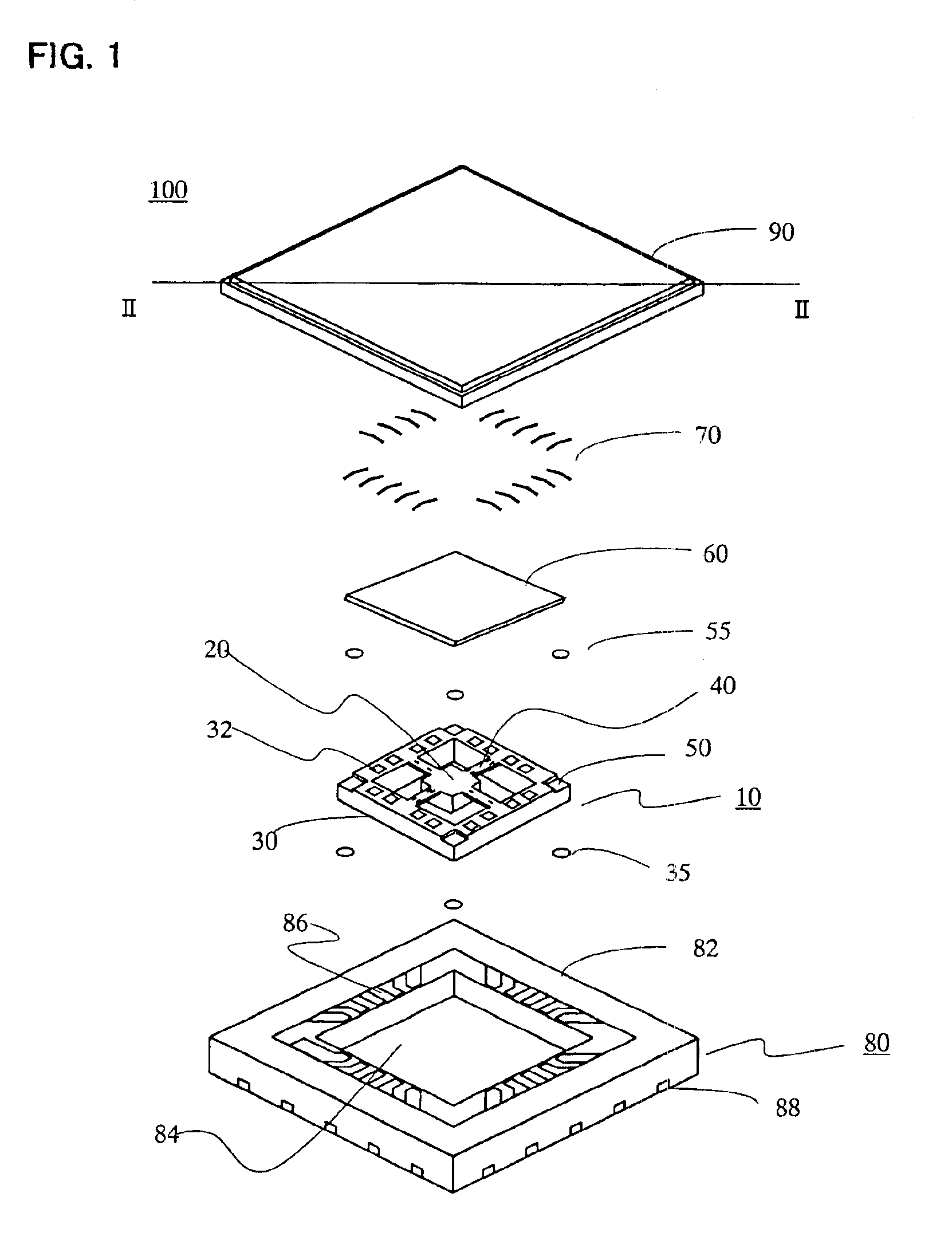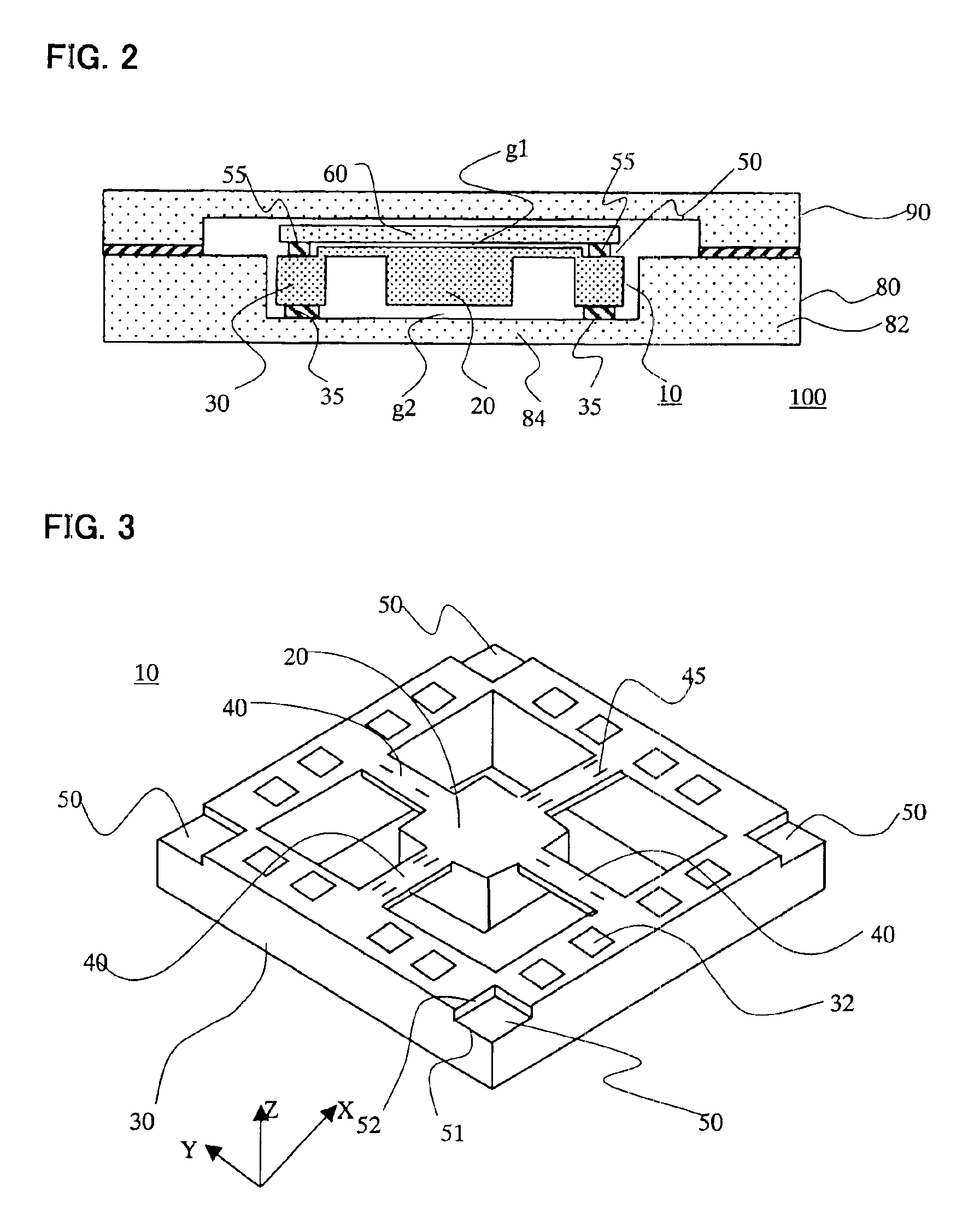Acceleration sensor
a sensor and acceleration technology, applied in the field of acceleration sensors, can solve the problems of elastic support arms breaking, elastic support arms being stuck, and amplitudes that are too large to achieve the effect of preventing a variation of sensitivity
- Summary
- Abstract
- Description
- Claims
- Application Information
AI Technical Summary
Benefits of technology
Problems solved by technology
Method used
Image
Examples
example 1
[0032]A first embodiment of the present invention will be explained, referring to FIGS. 1 through 4. FIG. 1 is an exploded perspective view of a semiconductor acceleration sensor device of the first embodiment of the invention, FIG. 2 is a cross sectional view taken along the line II—II in FIG. 1, FIG. 3 is a perspective view of an acceleration sensor chip to be used in the acceleration sensor device shown in FIG. 1, and FIG. 4 is a plan view of the acceleration sensor chip of FIG. 3.
[0033]The acceleration sensor chip 10 for the present invention uses a silicon single crystal substrate with an SOI layer being formed via a SiO2 insulation layer, namely, an SOI wafer, in order to make it possible to control the thickness of elastic support arms with high precision. The SOI is an abbreviation of Silicon On Insulator. In this example, a wafer formed by thinly forming the SiO2 insulation layer being an etching stopper (about 1 um) on a Si wafer with thickness of about 600 um, on which an...
example 2
Comparative Experiments of Acceleration Sensor Devices of the First Embodiment with Compared Devices
[0046]One hundred acceleration sensor devices of the first embodiment were produced and their sensitivities and offset voltages were measured. Other one hundred acceleration sensor devices (referred to as compared devices) similar to the first embodiment except that they had no recesses formed thereon were produced and their sensitivities and offset voltages were measured. The sensitivity refers to an output voltage measured when acceleration of 1 G is applied, and a variation of the sensitivity (variation range ratio) was represented by a percentage of the difference between the maximum and minimum sensitivities of measured sensitivities divided by an average sensitivity. The acceleration sensor devices of the first embodiment provided for a 10% reduction of the variation range ratio of sensitivity compared to the compared devices. The offset voltage refers to an output voltage witho...
example 3
Relation Between Sensitivity and Resin Adhesion Area
[0048]Similar acceleration sensors to ones used in the acceleration sensor devices of the first embodiment, which had upper regulation plates mounted on the acceleration sensor chips without protection cases, were produced with different sizes of recesses on their thick frame. One type of paste that contains 10 mass % of the hard plastic balls having diameters of 15 um and silicon-rubber resin adhesive for the remaining portion of the paste, and another that contains the epoxy adhesive instead of the silicon-rubber resin adhesive are used as the paste for fixing the upper regulation plate to the acceleration sensor chip. FIG. 5 shows the measurements of the sensitivities of these acceleration sensors. The graph in the FIG. 5 shows the sensitivities in the axis of ordinates and the ratios of the areas of the recesses (adhesion area) to the areas of the thick portions in the axis of abscissas. The sensitivities refer to output voltag...
PUM
| Property | Measurement | Unit |
|---|---|---|
| diameters | aaaaa | aaaaa |
| thickness | aaaaa | aaaaa |
| thickness | aaaaa | aaaaa |
Abstract
Description
Claims
Application Information
 Login to View More
Login to View More - R&D
- Intellectual Property
- Life Sciences
- Materials
- Tech Scout
- Unparalleled Data Quality
- Higher Quality Content
- 60% Fewer Hallucinations
Browse by: Latest US Patents, China's latest patents, Technical Efficacy Thesaurus, Application Domain, Technology Topic, Popular Technical Reports.
© 2025 PatSnap. All rights reserved.Legal|Privacy policy|Modern Slavery Act Transparency Statement|Sitemap|About US| Contact US: help@patsnap.com



